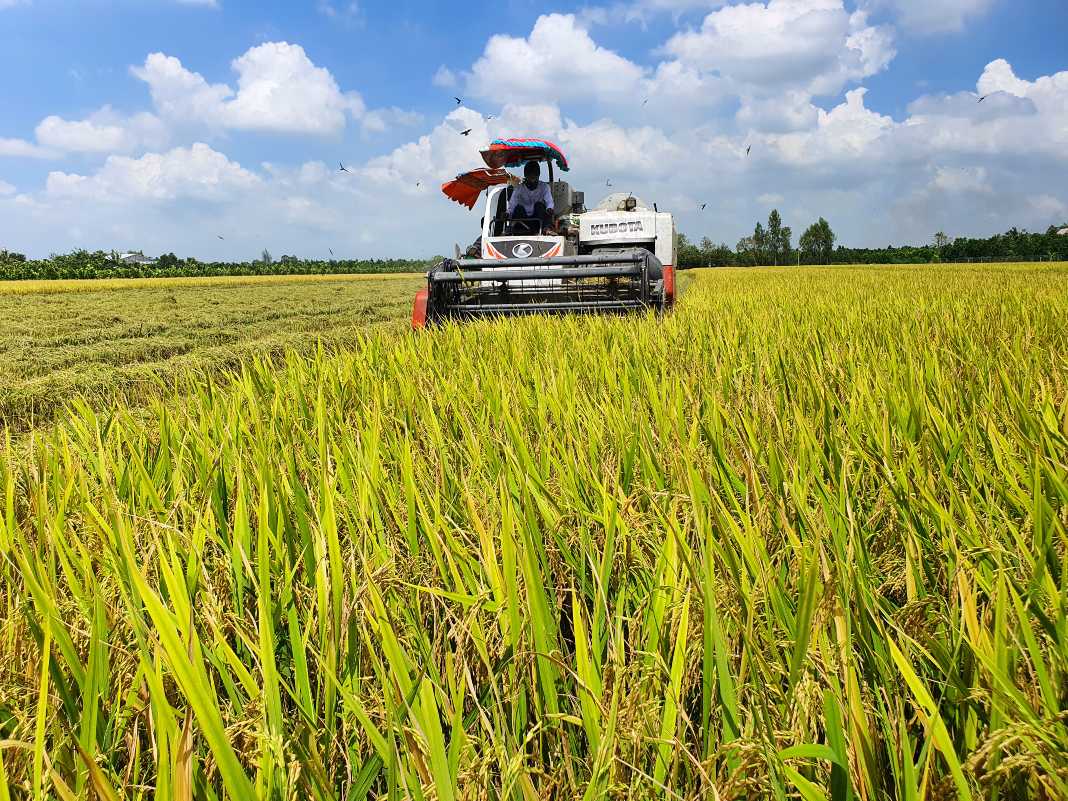The Mekong Delta has been in decline, and questions arise over whether its economy will return to growth or continue to suffer from the downturn in the next period.
After the high growth in the 2001-2010 period, the Mekong Delta’s economy gradually slowed down and entered a recession from 2019-2021. The Covid-19 pandemic negatively impacted the economy, yet economic resilience started to backslide before that period. When the economy grows well, people tend to stay in the province to earn their living, resulting in a low net migration rate. In contrast, the situation is reversed during an economic downturn.
The Mekong Delta’s economy has been facing an increasingly gloomy and uncertain outlook. With the improvement in the infrastructure system and foreign investment in new fields, however, the region may take this opportunity to turn the tide.
Economic traps behind advantages
Agriculture-based economies, poor transport infrastructure, an inadequate education and training system, as well as unsuitable economic strategies have remained the main hurdles to the development of the Mekong Delta provinces for a long time.
With the natural advantages of developing the agricultural industry, the region could overcome food-related problems and ensure food security.
When a recession threatens the economy, the agricultural industry is viewed as the main pillar of the entire community. However, the Mekong Delta provinces have fallen into the hidden traps behind those advantages and the shadow of their previous achievements.
Almost all the mindsets, actions and working styles, as well as the education and training system, have been strongly affected by agricultural advantages. As a result, the mindset of dependence on the agricultural industry has shaped the planning and infrastructure investment policies in the region. Moreover, the majority of development strategies have been drawn up to solve the problems of agricultural industries.
The long-term inadequate infrastructure has hindered the locality’s attempts to attract investment from enterprises and organizations, posing problems for economic development. In addition to the low quality of human resources, net migration has been on the rise, worsening the situation. Despite many universities and colleges in the region, the Mekong Delta has not seen any breakthroughs or significant changes in the education and training system for decades.
The economic policies have been a big hurdle for the development of the Mekong Delta provinces, as they focus on turning the entire region into a rice production area to ensure food security. Strict restrictions on agricultural land use set large barriers to the region’s economic dynamism and pose challenges to investment promotion as well as access to capital.
Currently, the Mekong Delta region is in a tough situation as the net migration rate has gradually increased every year. Natural advantages and food security may not be of concern to the farmers. Instead, they care about how to make a living and provide for their families. Once they cannot make it in the region, they are forced to go elsewhere to earn their livelihood. The constant waves of migration in recent years clearly show the region’s economic realities.
Before entering the new development cycle, the Mekong Delta region needs to escape the traps behind the natural advantages and shadows of previous achievements. The strategy for regional development should be “outside the box” or something going beyond a focus on agriculture.
There are more important things to do for regional agriculture and the development of other new sectors. To ensure food security for the country, the farmers should be given an opportunity to earn more money and improve their living standards. It would be great if they could have the same access to loans and capital as people in urban areas.
Additionally, the Mekong Delta region has been facing other challenges on the journey to regain the growth momentum, including climate change, increasing production costs and the gradual loss of comparative advantages in agriculture.
Climate change, the presence of upstream dams and the depletion of alluvial sediment have seen unexpected negative impacts on the development of the region. Perhaps, the advantages of agriculture will gradually disappear if the situation remains unchanged.
The region has currently seen a gradual decline in comparative agricultural advantages. Although agricultural exports bring billions of U.S. dollars to the region each year, many enterprises and farmers find it hard to deal with problems related to raw materials, seedlings and production costs. When importing materials from other provinces and countries, factories will find ways to adapt their supply chains to greater external risk factors.
The increasing production costs have put the export industry in a tough situation where they cannot determine the export rice themselves and keep their products at competitive prices for long, amid the rising production expenses.
This problem cannot be solved if the region only focuses on what to do with the agricultural industry instead of developing other additional sectors.
Important factors to determine regional economic outlook
Four important factors that could determine the economic outlook of the Mekong Delta region in the next decade comprise the transport system, the green economy, technology application and digital technology, and land policies.
The new system of arterial roads and expressways will help reshape the economic space. Significant changes will come to the region after 2025 as the new expressways are implemented. An adequate transport system will create favorable conditions for the restructuring of agriculture and the development of the urban economy, processing industry, services, and trade sectors. After that, land prices will gradually increase.
The green economy will encourage new sectors and industries to develop in the region, as well as lay down requirements for sustainable agriculture. Some recent renewable energy and foreign direct investment projects are just the beginning, as the Mekong Delta provinces still have lots of potential in developing this new industry.
Moreover, technology application and digital technology are seen as boosters for the development of the agricultural industry. In the near future, a service supply chain will be formed on the foundation of agriculture. Green economy and digital technology also require farmers to prepare with enough knowledge and skills.

The increase in the price of agricultural land will be followed by a surge in the asset value of farm households, creating more investment and business opportunities and boosting the purchasing power in the market.
It will also help reallocate land resources as low-value crops and livestock may disappear. The whole industry value chain will be upgraded to new segments thanks to the price surge; however, some value chains may be replaced. Those significant changes will strongly affect the mindsets and actions of the local people.
These factors all lay down a requirement for the upgrading of human resources. Among various obstacles to development, the education and training system is the largest concern of the region. Each province should draw up its own solutions to this problem to eliminate bottlenecks in the development of the whole region.
Unpredictable geopolitical changes bring more advantages than disadvantages to the Mekong Delta, as the agricultural industry is still a strong point of the economy in the region and the whole country. To nurture these advantages, additional sectors which support agriculture and agricultural trade need to be developed in the region, especially in Can Tho, where the transport system can satisfy the requirements.
Therefore, the development of the Can Tho International Airport should be linked closely to agricultural trading activities in the whole country.
Last but not least, land policies should create favorable conditions for farmers to do business, contributing to the development of the economy in rural areas. It is necessary for the authorities to draw up appropriate strategies to improve the regional transport system, education and training system, as well as the quality of the universities.









